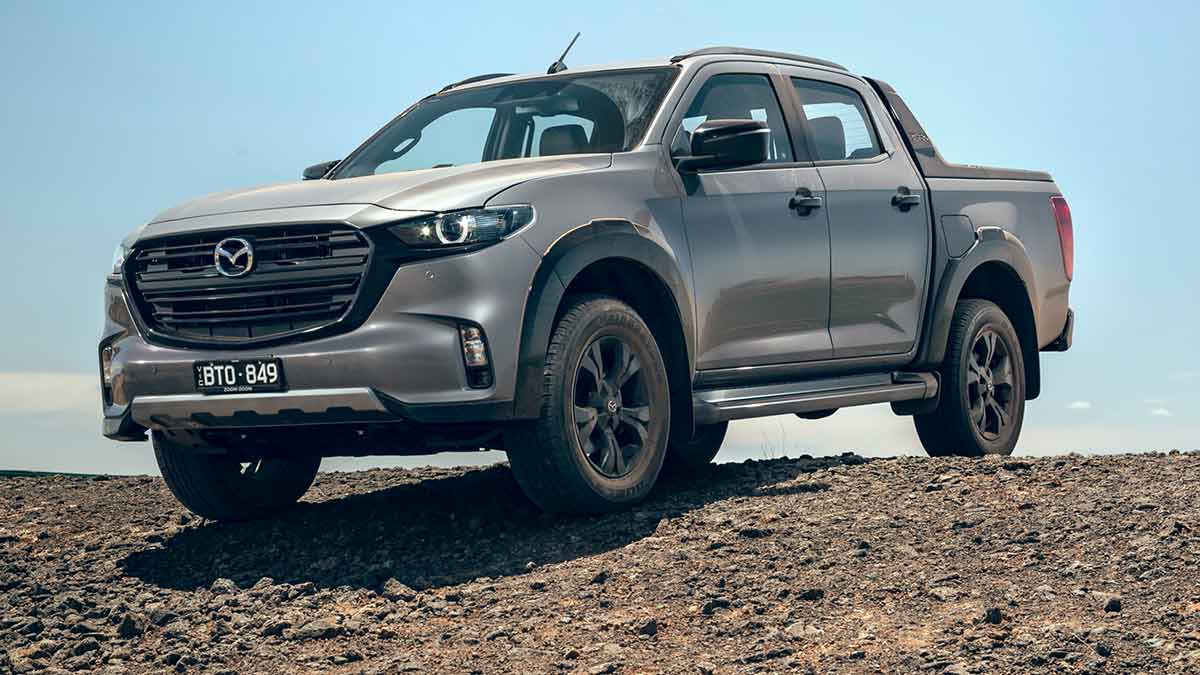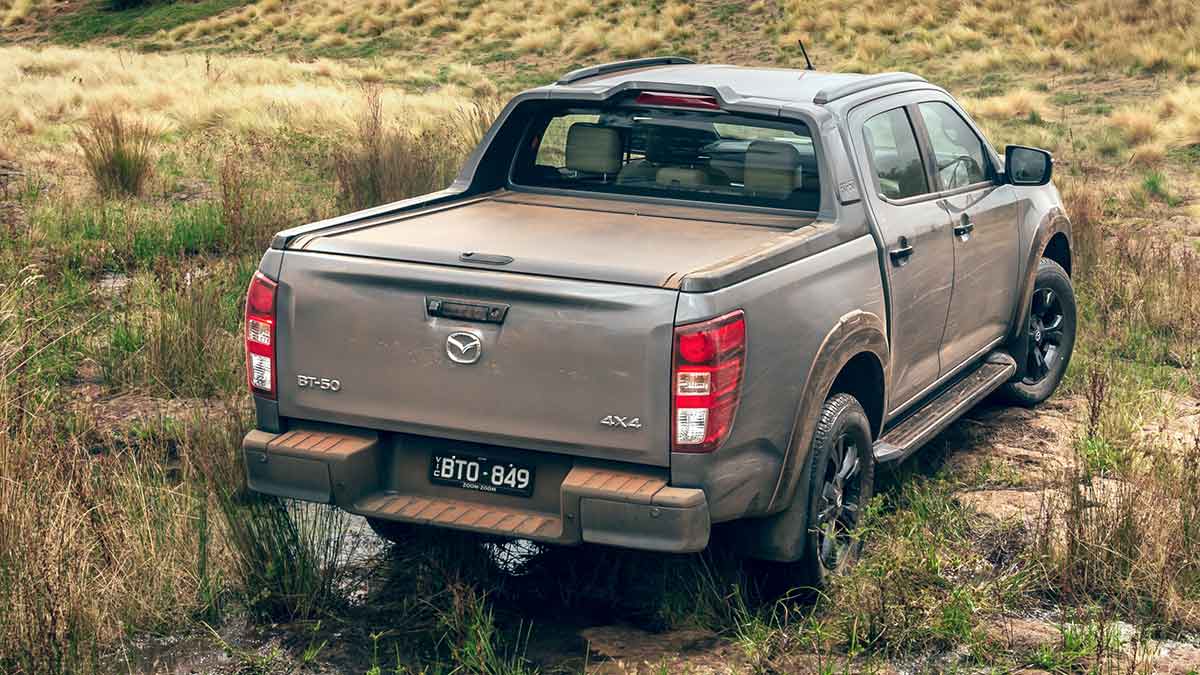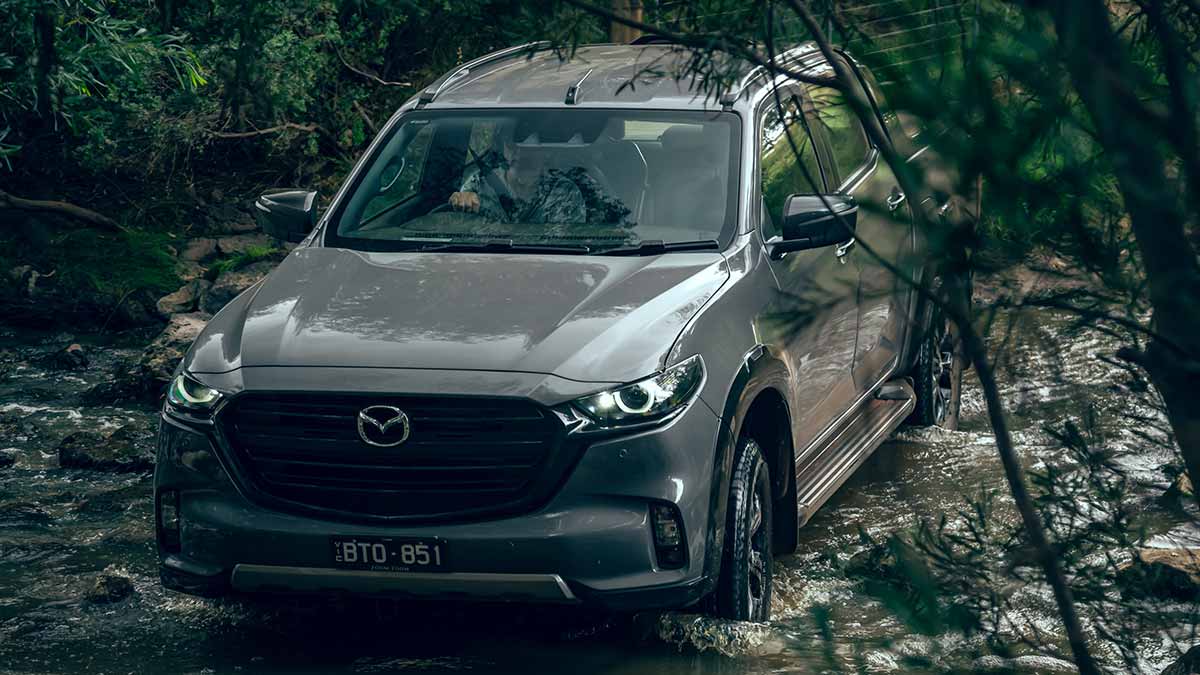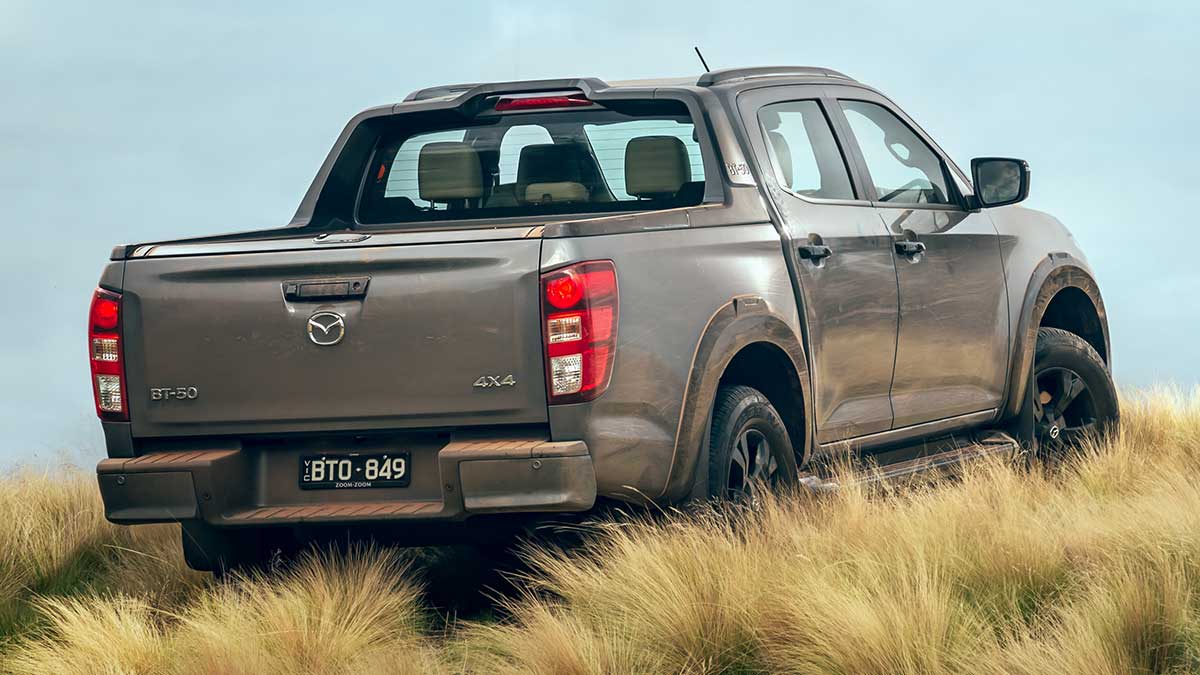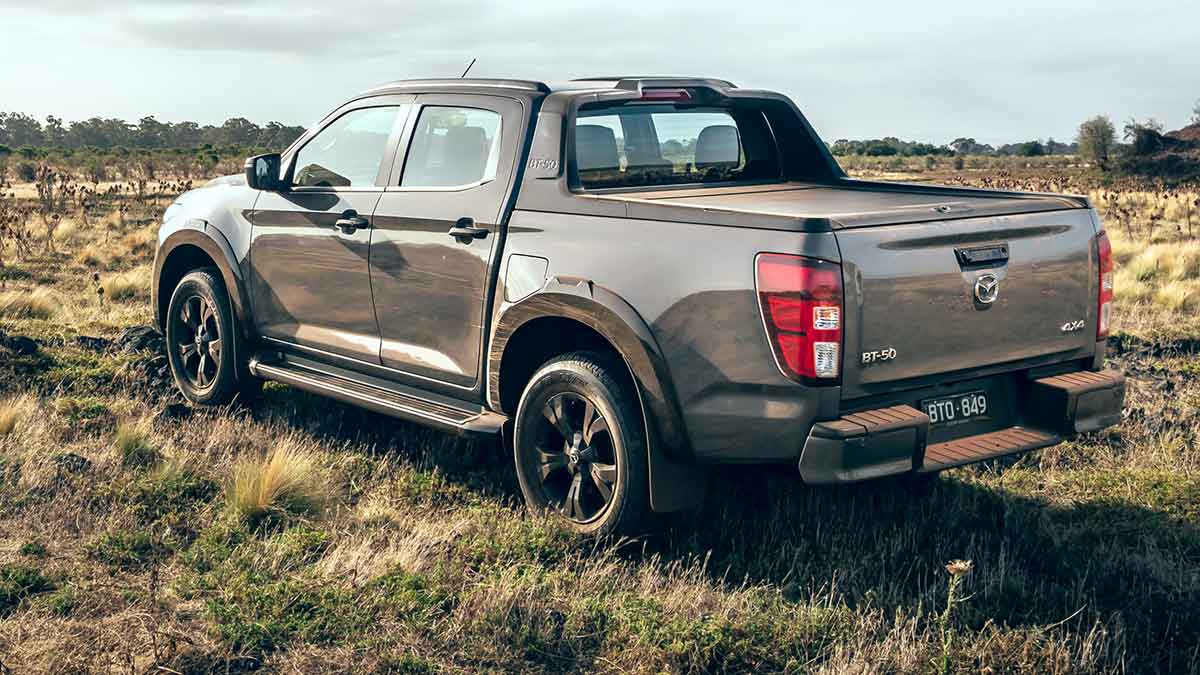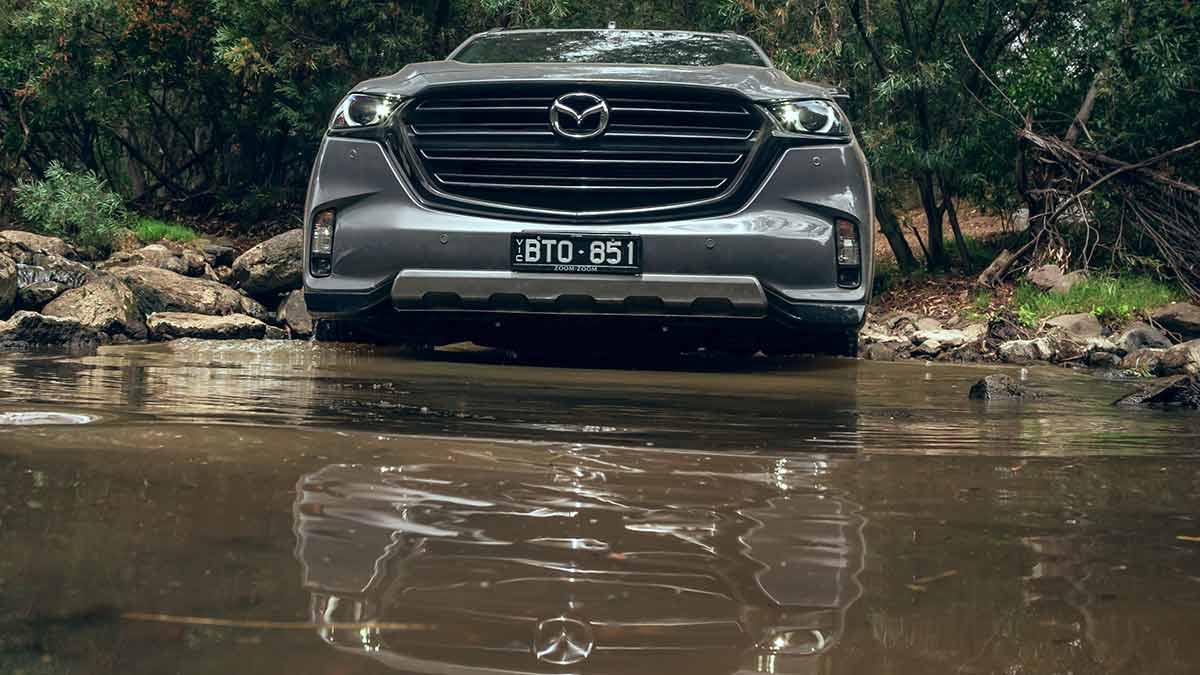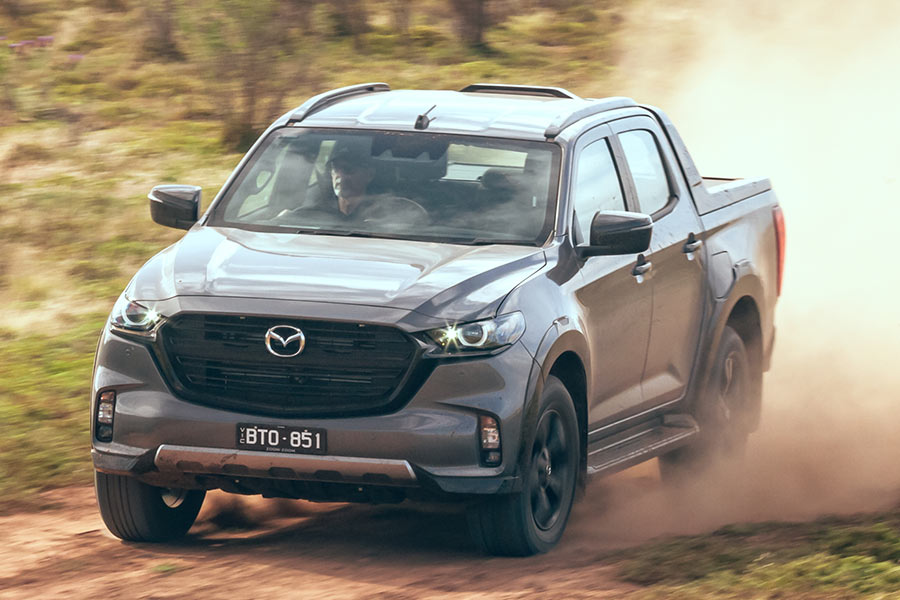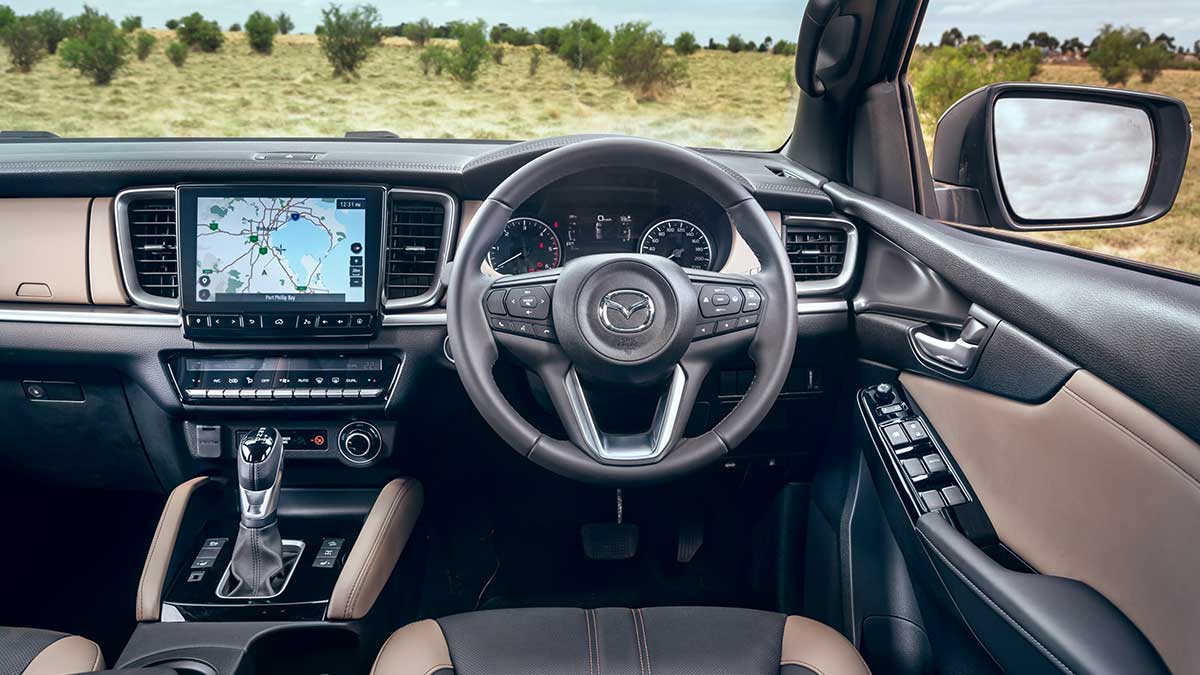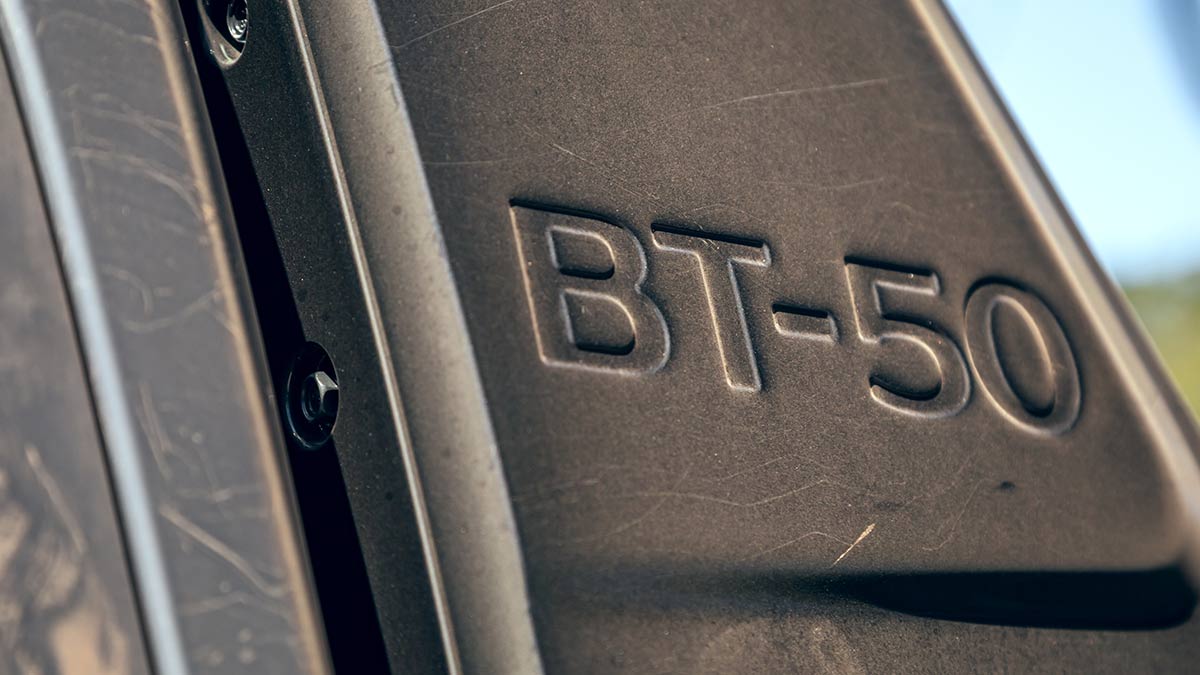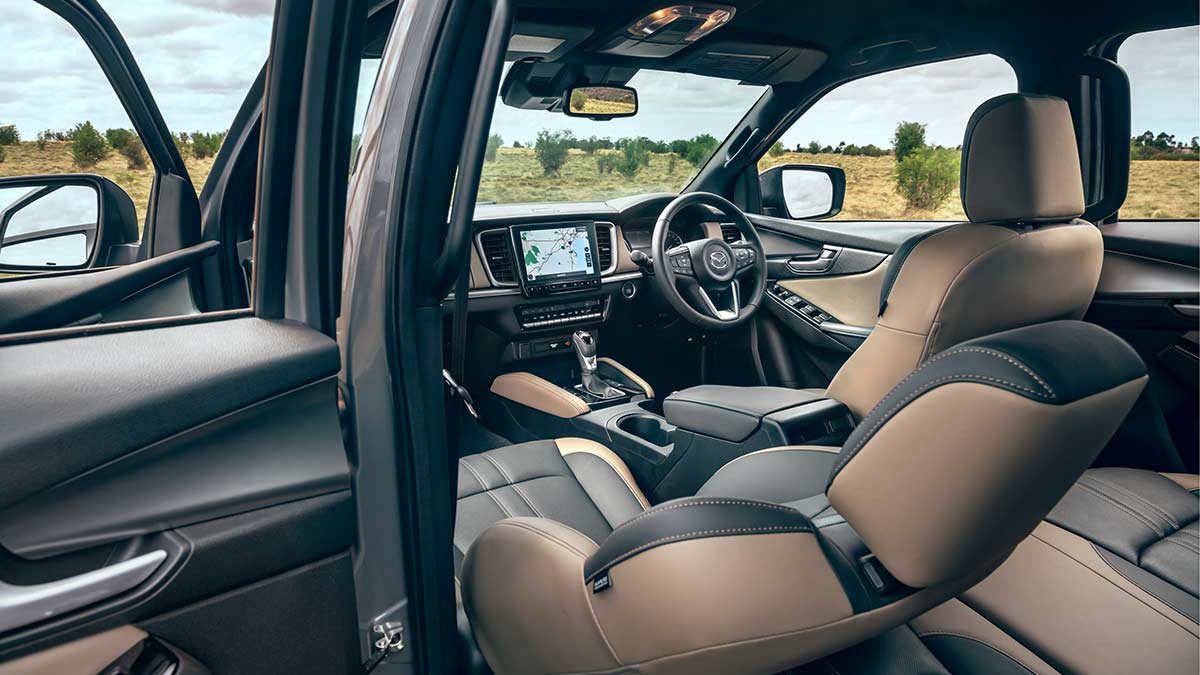The Foton Tunland joins Australia's dual-cab ute market as an affordable mild-hybrid diesel under $50,000, offering strong capability against tough competition.
2022 Mazda BT-50 first drive review

Mazda has added a high-spec variant to its BT-50 range to better compete against the Toyota HiLux and Ford Ranger in the booming ute market.
Off the back of record sales in January for the segment for Mazda, company managing director Vinesh Bhindi forecasts ongoing growth due to increased business activity and continued interest by private buyers.
“The infrastructure projects government and business have in place means the ute market will continue to grow,” he says.
“Whether supply can meet that demand is a whole different ball game”.
The Mazda BT-50 is mechanically identical to the Isuzu D-Max, in the same way the upcoming Ford Ranger and Volkswagen Amarok will share their essential elements.
That means potential buyers who like the ride have the option of cross-shopping, though it’s worth noting the Mazda and Isuzu do have unique front-end designs, so the styling will probably dictate which dealership you head into.
The Mazda is also perceived as a capable lifestyle vehicle against Isuzu’s traditional reputation as a reliable workhorse.
On this page
- How much does the Mazda BT-50 cost?
- How safe is it?
- What's it like inside?
- What's under the bonnet?
- Is it efficient?
- How does it drive?
- Should I buy one?
How much does the Mazda BT-50 cost?
Providing you can provide an ABN, the Mazda BT-50 XS enjoys a starting price of $39,490 driveway for the single-cab rear-wheel drive version with a standard tray. A dual-cab ute is $44,990 on the road and the four-wheel drive ute sees the price grow to $52,490 in your driveway.
All XS variants are powered by a 1.9-litre four-cylinder turbodiesel engine, matched to a six-speed automatic transmission.
Being the base version, the XS misses out on niceties such as inbuilt satellite navigation, alloy wheels, heated seats and dual zone air-conditioning buyers will find in the more expensive versions.
Given the ABN-only factory driveway pricing it is no surprise the XS versions are aimed at business operators who need the carrying capacity but don’t need the extra running costs of the 3.0-litre turbodiesel found in all the other variants.
Those variants now include the SP version, which slides into the line-up under the Thunder as the second most-expensive BT-50. Priced at $63,990 driveaway with a six-speed manual gearbox or $66,990 for the six-speed auto, the SP can be identified by the black and tan leather seat trims, black side mirrors and door handles and black grille. A manually operated roller tonneau cover is standard, as are side steps and a sports bar.
Service intervals are 12 months/15,000km. On a dual cab 4x2 XS ute the first five services will cost $2005. The SP 4x4 variant will see owners pay $2294 with an auto transmission vehicle and $2357 if they’re driving the manual.
How safe is the Mazda BT-50?
The BT-50 hasn’t been crash-tested and probably won’t be.
ANCAP doesn’t see the need, having satisfied itself the Isuzu D-Max ratings also apply to its sibling (apart from the top-of-the-line Mazda BT-50 Thunder version, which is unrated).
That means the BT-50 is a five-star vehicle. The only criticism ANCAP had of the crash-tests related to the frontal offset crash (known as the MPDB test, where a 1400kg trolley impact the driver’s side of the test vehicle while both are travelling at 50km/h)
ANCAP noted “The MPDB test provides an insight into vehicle compatibility (the risk presented to other vehicles in a frontal crash). The front structure of the Mazda BT-50 presented a higher risk to the occupants of an oncoming vehicle in this test, and the maximum four-point penalty was applied”.
The impact to the driver’s chest and upper legs was also assessed as “marginal” in this test.
Overall, the BT-50 scored 83 per cent for adult occupant protection and 89 per cent for child protection, though the safety body recommends against installing child restraints in the single and freestyle cab variants because of the lack of top tether anchorages (dual-cab versions have top tethers in the outboard seats).
The vulnerable road user rating was 67 per cent, with the autonomous emergency braking’s ability to detect cyclists rated as “marginal” and ANCAP noting the AEB system is not designed to detect pedestrians when the vehicle is reversing.
Safety assist features earned the Mazda ute an 84 per cent rating. Unlike some manufacturers, Mazda shoves every bit of safety technology into all versions, with the XS even enjoying adaptive cruise control.
What's it like inside the Mazda BT-50?
Mazda is sitting at the pointy end of the ute field for now (pending the arrival of the Ranger/Amarok) in terms of cabin quality.
The touchscreen infotainment display comes in seven or nine-inch sizes depending on the version and the screen is legible in all light levels.
The cloth seat trim on the base XS looks upmarket and the seats themselves are reasonably supportive.
Visible plastics are well contoured and textured and the door pockets will take drink bottles up to 1.5 litres.
Poke the headlining where it meets the doors and there is noticeable give, but you have to be a pedantic car tester to start poking in those types of places.
The steering wheel adjusts for reach and height and the driver’s display is easy to decipher at a glance.
What’s under the Mazda BT-50's bonnet?
XS versions are fitted with a 1.9-litre turbodiesel good for 110kW and 350Nm. It is matched with a six-speed auto (you can’t get a manual with this engine).
The smaller engine trims towing capacity from 3500kg to three tonnes but otherwise is hard to fault. If the boss throws you the keys to a BT-50 XS as your next work vehicle, you’re not going to be disappointed.
The SP does pack the bigger 3.0-litre four-cylinder turbodiesel engine cranking out 140kW/450Nm. It can be had in manual or automatic guise, with the auto a $3000 premium.
Is the Mazda BT-50 efficient?
The dual-cab 4x2 XS has a claimed combined range of 6.7-litres every 100km. That undercuts the 3.0-litre-engined versions by a litre. Opt for a four-wheel drive variant and you’ll officially use 8.0-litres/100km on the combined cycle, or 9.8-litres around town.
That’s good for the segment but obviously will vary dramatically depending on how much weight is in the back and whether you’re towing.
How does the Mazda BT-50 drive?
Road-biased Bridgestone Dueller rubber isn’t supposed to grip this well off the beaten track.
A run around some of the tougher roads in the Lerderderg State Park proves how capable the traction control systems are when the going gets gravelly.
The rear differential lock (standard on all four-wheel-drive versions) didn’t need to be engaged to negotiate some relatively rugged terrain and, while the tyres did spin on occasion, the software ensured momentum was maintained and the Mazda’s progress was unimpeded.
The ute would benefit from some weight in the back on back roads. The rear end stepped out a few times through loose gravel turns but the stability control hauled it back into line before it became disconcerting.
Seat-of-the-pants feel indicates 150-200kg of load secured in the tray would alleviate the problem. That’s common for most utes with leaf rear suspension: the tuning has to be a compromise between unladen and hauling up to a tonne of weight.
That said, the BT-50 doesn’t bounce over speed humps or crash over decent lumps in the road.
A USB port and rear air vents ensure those in the back are catered for as well as a conventional SUV.
On the road the electric power steering is possibly too effortless but it is direct. A 12.5 metre turning circle means you’re doing three-point turns in suburban streets but otherwise the Mazda ute is a compliant and convenient tool around town.
The SP’s 3.0-litre engine doesn’t feel stressed and doesn’t even sound diesel-like until you put the boot into it.
Should I buy one?
Probably, if you need to access a quality ute reasonably quickly.
If you don't need to jump in, sit on the fence until later this year and see how the new Ford Ranger/VW Amarok stack up ... and at what price.
For now, the XS is a compelling proposition as a workhorse; the SP competes against some classy opposition but holds an edge in interior quality.
While it's wise to check out the Ranger and HiLux before you buy the Mazda, you won’t be disappointed with the BT-50.
The information provided is general advice only. Before making any decisions please consider your own circumstances and the Product Disclosure Statement and Target Market Determinations. For copies, visit racv.com.au. As distributor, RACV Insurance Services Pty Ltd AFS Licence No. 230039 receives commission for each policy sold or renewed. Product(s) issued by Insurance Manufacturers of Australia ABN 93 004 208 084 AFS Licence No. 227678.
